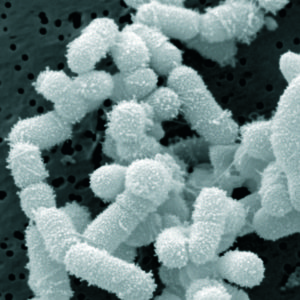 Food is all important for health. A recent study (that analyzed data from 10 large studies in the US, Europe, and Asia) found an association between high fiber intake from foods and also frequent eating of yogurt with a lower incidence of lung cancer. Persons with the highest yogurt and fiber consumption had a 33% reduced risk of lung cancer (when compared to the group who did not consume yogurt and consumed the least amount of fiber).
Food is all important for health. A recent study (that analyzed data from 10 large studies in the US, Europe, and Asia) found an association between high fiber intake from foods and also frequent eating of yogurt with a lower incidence of lung cancer. Persons with the highest yogurt and fiber consumption had a 33% reduced risk of lung cancer (when compared to the group who did not consume yogurt and consumed the least amount of fiber).
Think of it this way: The fiber in foods feeds the beneficial bacteria in the gut. High fiber foods that feed microbes in the gut are known as prebiotics. It is good to eat a variety of foods, because they provide a variety of fibers. High fiber foods are whole grains, fruits, vegetables, seed, nuts, and legumes (beans).
Gut microbes use fiber to generate short-chain fatty acids, and these are anti-inflammatory. Evidence suggests that the beneficial effects are not restricted to the gut, but reach organs throughout the body, including the lungs. The researchers suggest that both fiber and yogurt have anti-inflammatory effects, and the combination of fiber and yogurt is stronger against lung cancer than either alone. They also thought that the Lactobacillus and Bifidobacterium species in yogurt somehow help improve the gut microbial system.
From Medical Xpress: High fiber, yogurt diet associated with lower lung cancer risk ...continue reading "High Fiber Foods, Yogurt, and Lung Cancer"

 Bacterial vaginosis is a problem for many women, with estimates that up to a third of women of reproductive age get it at some point in life. Bacterial vaginosis is a condition where the microbes in the vagina are imbalanced or out-of-whack, especially with diminishing numbers and types of Lactobacillus species. Lactobacillus species are typically the dominant bacteria in healthy vaginal microbiomes.
Bacterial vaginosis is a problem for many women, with estimates that up to a third of women of reproductive age get it at some point in life. Bacterial vaginosis is a condition where the microbes in the vagina are imbalanced or out-of-whack, especially with diminishing numbers and types of Lactobacillus species. Lactobacillus species are typically the dominant bacteria in healthy vaginal microbiomes. Everyone is concerned with the problem of antibiotics not working due to antibiotic resistance, that is, when bacteria resist the effects of antibiotics. Researchers typically study genetic changes that occur in bacteria over time, but
Everyone is concerned with the problem of antibiotics not working due to antibiotic resistance, that is, when bacteria resist the effects of antibiotics. Researchers typically study genetic changes that occur in bacteria over time, but  The number of people diagnosed with the infection Valley fever is increasing. According to a CDC (Centers for Disease Control and Prevention)
The number of people diagnosed with the infection Valley fever is increasing. According to a CDC (Centers for Disease Control and Prevention)  The issue of
The issue of  The evidence is growing. Another
The evidence is growing. Another  The Paleo diet has been around for years and yet it continues to be controversial. The debate is whether following the Paleo diet long-term has health benefits or not? Supporters of the Paleo (Paleolothic) diet say it promotes gut health and is good for gut microbes, but
The Paleo diet has been around for years and yet it continues to be controversial. The debate is whether following the Paleo diet long-term has health benefits or not? Supporters of the Paleo (Paleolothic) diet say it promotes gut health and is good for gut microbes, but  New
New  Want to prevent your children from having allergies or asthma? A recent study adds support to increasing evidence that growing up on
Want to prevent your children from having allergies or asthma? A recent study adds support to increasing evidence that growing up on